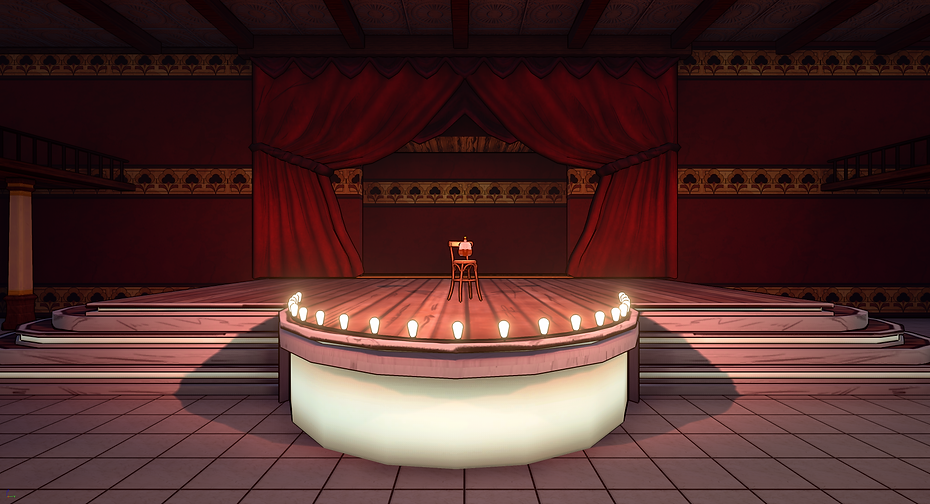Contributions

Title
Team Programmer (1 of 2, total interdisciplinary team of 9)
Roles
-
Made animation blueprints for guns and avatars with the Persona editor
-
Implemented client-server gun swapping and hit-scan gunfire
-
Built real-time toon outline and silhouettes using UE4’s Material Editor
-
Turned designer wireframes into player HUD and menus with UE4’s UMG
Time
158.5 hours in production over 10 weeks (POCG’s start to RTM’s end)
“Even though Ben wasn't a lead, I knew I could always rely on him.” – Andrew Curley, Team Producer
For the Family is a multiplayer capture-the-flag FPS for PCs,
where players fight as Prohibition-era gangsters in a war to corner the bootleg market.
Players capture the enemy team's flask for the glory of their family!
Postmortem

What went well?
-
Challenging myself with an entirely new game engine and genre of mechanics.
-
Building art frameworks in collaboration with our art lead to realize game look and feel.
-
Working under a lead programmer for the first time, especially later in development when we applied an additional set of mechanisms to facilitate department workflow:
-
requiring one another to verify the other’s work on a double-approval board,
-
negotiating an alpha-to-RTM final feature list with all departments,
-
sorting sprint tasks into tiers, treating lesser priorities like stretch goals
-
What went wrong?
-
Completing one gun per sprint hindered designers’ testing their levels for balance.
-
Encouraging non-coders to use bug-reporting tools did not result in them using it; higher levels of help, encouragement or urgency appears necessary.
-
Focusing only on meeting our team’s deliverables in our first sprint, neglecting teams struggling on issues in their systems we had already faced.
What have I learned?
-
Reusing legacy project, marketplace, or starter kit assets, with relatively low-cost changes, keeps them from leaving a cheap impression, e.g. for the pistol poses.
-
Verifying that all intended work directly contributes to at least one of the game’s core pillars helps the game’s identity come through clearer, before and after its completion.
-
Two immensely helpful meetings need to occur during every new team’s formation:
-
An interview of each member’s strengths, weaknesses and interests, organized per department with the producer and the game designer.
-
An honest, team-wide discussion on crunch: when it could become mandatory or forbidden, and (if only voluntary) not shaming those who refuse to crunch.
-
Anything networking can break, it will break.













